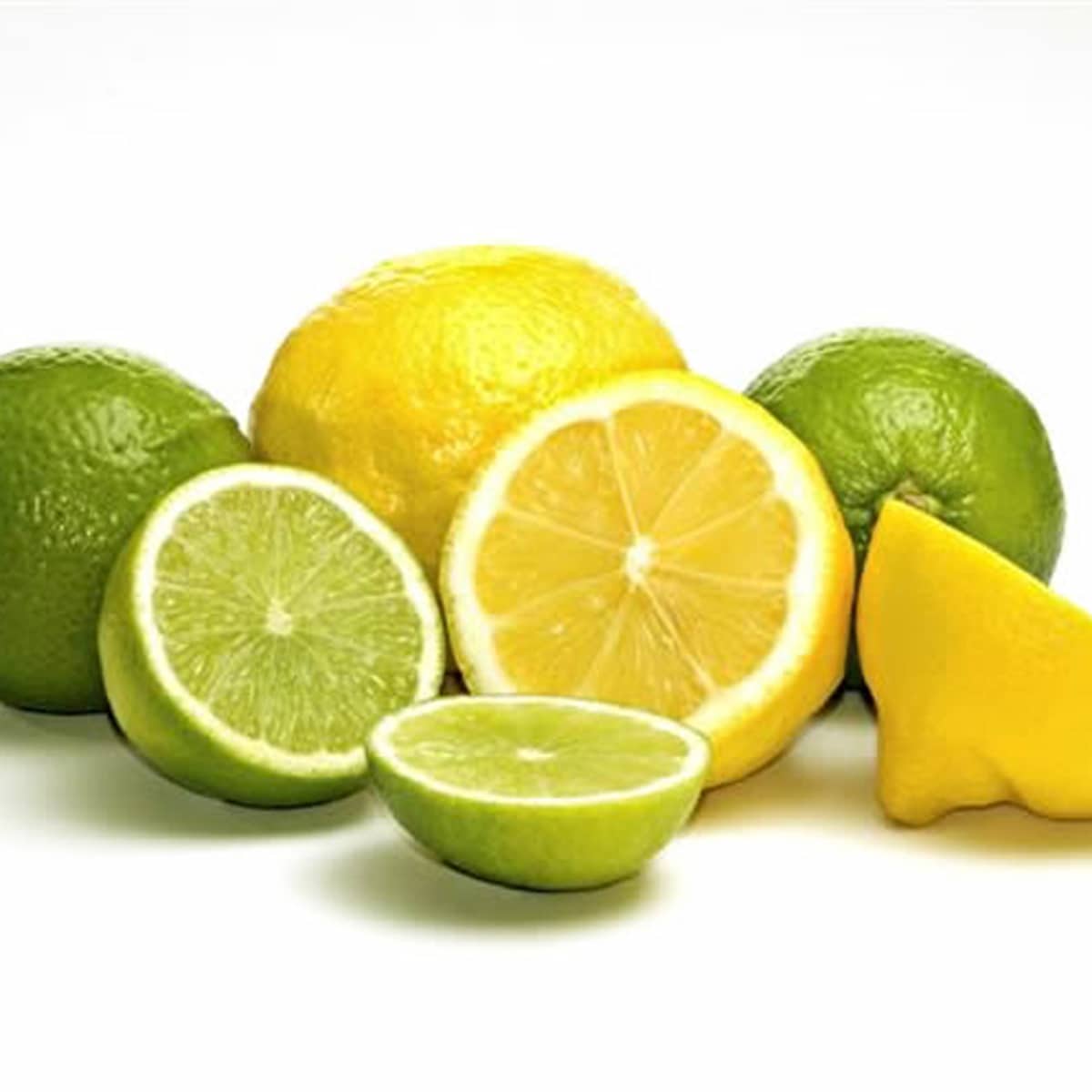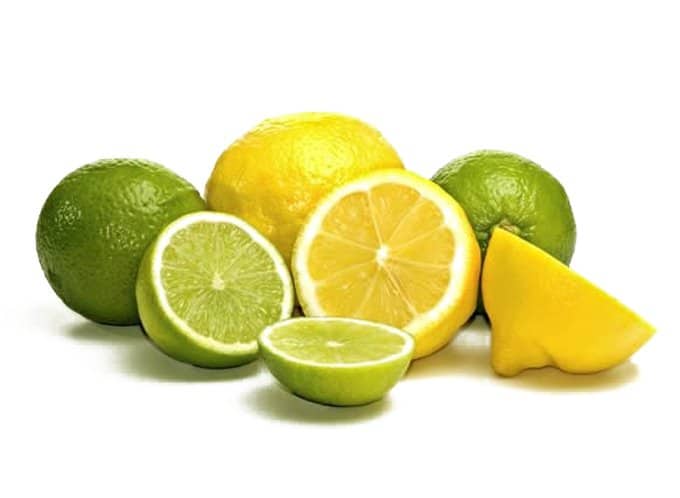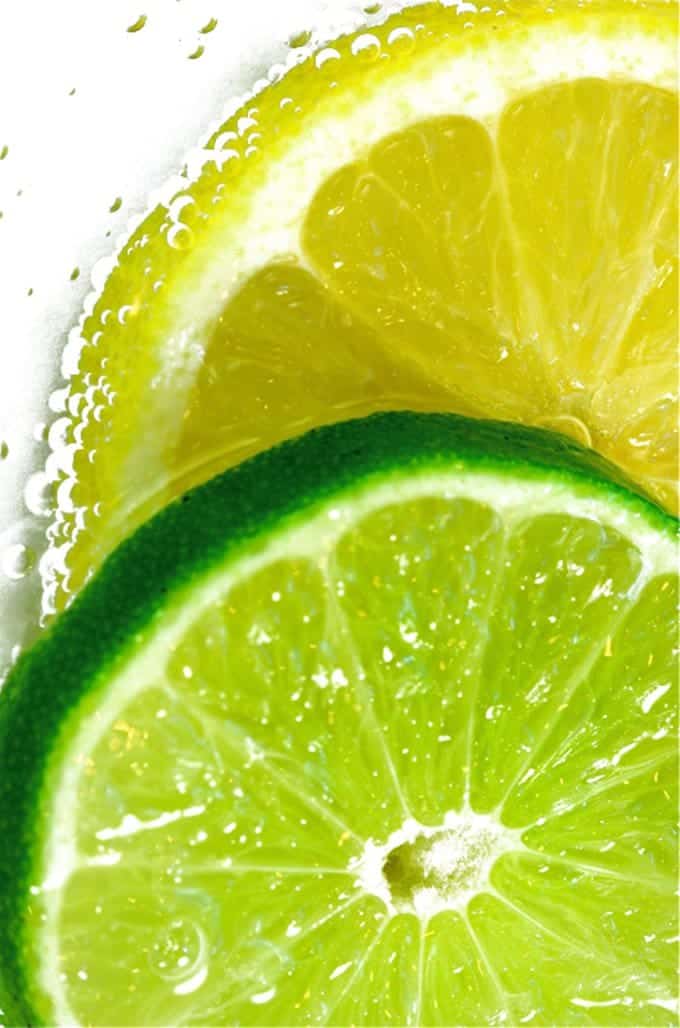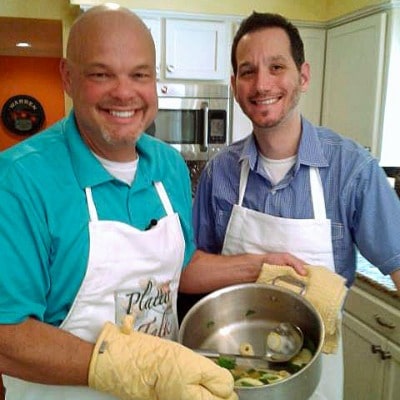How to Choose a Juicy Lemon or Lime
on Sep 12, 2016, Updated Oct 13, 2021
This post may contain affiliate links. Please read our disclosure policy.
Knowing how to choose a juicy lemon or lime is one of our many pro kitchen tips.

Have you ever gone to the grocery store to pick up some nice juicy lemons or limes, only to cut them in half at home to find that they’re mostly rind or nearly dry cell sacks? Giving precious little juice to be had when giving them the squeeze?
Just like knowing how to tell when peaches are ripe, you’ll want to know how to pick a juicy lemon or lime. Read on and I’ll share my top tips for this!
How to Choose a Juicy Lemon or Lime
I love to talk about food and that involves a lot more than just recipes. There are so many food-related things to know about in order to be the best cook or baker you can be.
That’s why we discuss things like the difference between stock and broth, why does chocolate hurt my teeth, and even the best way to grease a cake pan! Today, we’re going to talk about how to choose a juicy lemon or lime.
Knowing how to pick the best limes or lemons is important for recipes like our Thai chicken pizza, our rosemary and lemon chicken, and of course our authentic guacamole recipe.
Lemons and limes add so much flavor to so many recipes! We use both the zest and juice from this fresh citrus.
Pro Cooking Tip
Buy a zester and use some lemon or lime zest as a garnish. Fresh zest from a lemon or lime adds beauty to food and will give you extra points for styling and presentation. You can do this with delicious lemon recipes like our Lemon 7-UP Pound Cake, Lemon Crunch Buddies, and our Creamy Lemon and Parmesan Noodles!

Here are some simple steps to prevent that from ever happening again.
Want to Save This Recipe, Friend?
- Start by color. A ripe lemon will be bright yellow. Any greening indicates an immature fruit, that will never develop to its full potential had it not been picked and left on the tree to ripen. Please note: this does not necessarily apply to the orange color in oranges (but that’s another story for later). With limes, avoid the brown spotty ones. They’re old and will produce a bitter juice.
- Bigger isn’t always better. The size of the lemon or lime doesn’t necessarily indicate the amount of juice that the fruit will produce for you.
- Choose fruit that is heavy for it’s size. That means holding two or three different pieces of the same type of fruit, one at a time, in the palm of your hand. Gently make a bouncing motion. Keep trading up until you find a few of the heaviest ones for their size. Most of the weight comes from the density of liquid contained therein.

- Inspect the Rind. Another step to make when selecting your fruit is to apply light pressure on the rind, in the middle of your fruit with your index finger and thumb tips. There should be a slight give.
- A fruit that’s resistant to a light squeeze surly has an overly thick rind equaling less juice. Conversely, a lemon or lime that presents sponginess will be over ripe and past it’s prime.

- Roll With It. Once you get home with your hand-picked treasures and it’s time to get the most juice out of your lemons and limes, simply roll fruit between your hands and kitchen countertop a few times. This action helps break down the inner cells that contain the juice, making the process easier for you.
Bonus Facts:
- 1 lemon of average size, should = 3T
- 1 lime of average size should = 2T

Finally
If you’re thinking, ” To heck with it, I’m buying the bottled concentrate; it’s easier, and its the same.” Do a side-by-side taste test of both.
Your taste buds will show you the difference between night and day. Salty, bitter chemicals or sunshine bright and fresh. And remember, fresh is always best.
👨🍳 Tried this Recipe? Please leave a ⭐⭐⭐⭐⭐ rating in the recipe card below and leave a comment. We love hearing from our readers!
⏩ Stay in touch with us on social media by following us on Facebook, Pinterest, Instagram, and YouTube!
📬Get our Recipes delivered to your inbox for FREE!












I seem to use much more citrus around the holidays. I thought that this might be a good thing to add to the boards. I’m happy that you enjoyed.
Thank you so much for this! I use so much citrus in my recipes and always looking for the best! This is so helpful!
Such great info! Thanks for sharing 🙂
Janie x
Janie, my pleasure. Thanks for the comment.
Such a helpful post!! Love it
Glad you like the tips. Hope they help.
Great group of tips, I always favour fresh and lemons are pretty easy to get here all year round unfortunately limes seem to disappear at the end of summer and don’t return till the following year 🙁
Thanks for the comment. Sorry about your lime supply.
These are awesome tips! I’m always so disappointed when I cut open a lemon and it’s dry. And the bottled kind is NASTY
I’m glad that the article helped you! Thanks for your comment.